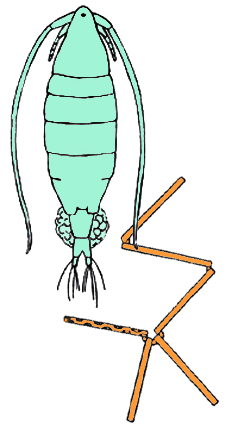The transformation of the global waste stream into mostly stuff made of single-life plastic was presaged in the 1930s with the invention of polyethylene (your plastic bottle), and then kicked into overdrive in the 1960 when the stuff became cheap to make. Since then, human impacts have ushered in an new ecological niche called the plastisphere.
Plastisphere /ˈpla sti sfi(ə)r/ an abundant substrate of anthropogenic origin in the marine environment that is receiving increased attention. (Amaral-Zettler, L. A.; Zettler, E. R.; Mincer, T. J.)
This is a more descriptive name IMHO than the garbage patch, trash vortex, etc., which effectively conjure images of great rafts of chunky landfill debris. Surely, big plastic is a devastating issue for marine ecosystems, evoking heartwrenching images of “ghost nets” that break free from commercial fisheries, plastic trash on the outskirst of the deep sea floor, and the ubiquitous bird belly full of plastic caps. Consider this the “charismatic macrofauna” of the plastisphere.
But wait, there’s more.
Most ocean plastic is small, like plankton. It is there in large amounts mixed in with the foundational slurry of the food web. And now researchers are following natural selection as it plays out in this tiny-yet-vast realm of the plastisphere.
As it turns out, while plastic “eats” our oceans, something eats the plastic.
From NBC News Science:
For about four decades, it’s been known that plastic is collecting in the open ocean. Now, scientists have found this debris harbors unique communities of microbes, and the tiny residents of this so-called plastisphere may help break down the marine garbage.
Inhabitants of the plastisphere include members of a group of bacteria, the vibrios, known to cause disease, and microbes known to break down the hydrocarbon bonds within plastics, genetic analysis revealed. But most important, the communities of microbes on the plastic pieces were quite different from those found in samples of surrounding seawater.
“It’s not a piece of fly paper out there with things just sticking to it randomly,” said study researcher Tracy Mincer, an associate scientist at the Woods Hole Oceanographic Institution, referring to the plastic. “There are specific groups of microbes that are attracted to that environment and are adhering to it and living on it.” -Wynne Parry

[…] Raft Across the South Seas. Given the changes since these days, in terms of the encroachment of the plastisphere into the water column…I wonder if such dining will still be possible on my […]